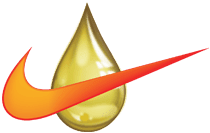- Armor Blog
- Vehicle
- 10 Summer Car Maintenance Tips

Summer car maintenance is as important to every car owner! Summer heat can reach 60 degrees levels in some countries like the UAE or Saudi Arabia! which can be dangerous to your engine! Few steps are all you need to have safe trips during the summer seasons.
Check Your Tires
Ensure your tires are in good condition for hot asphalt! the process is easy and only takes few minutes!
Inspect Tread Depth
- Use a tread depth gauge.
- make sure threads are not shallow
Check Tire Pressure
- While tires are cold, check pressure using pressure gauge.
- The values should ne between 30 and 35 psi
- Inflate or deflate the tires depending on the reading.
Examine for Wear and Damage
- Check tires visually and search for any cuts, cracks, or bulges on the sidewalls.
- Also look for uneven wear patterns as they can be a bad sigh.
Monitor fluid levels to keep your car cool
Keeping your car’s fluids at optimal levels is vital for its performance and longevity. Here’s how to monitor and maintain fluid levels:
Coolant
Heat is the main problem in summer. Engine coolant plays the main role to cool down your car (along with other cooling fluids of course). With the extra heat from the sun, you need to ensure you have enough coolant in your vehicle. Don’t just choose any coolant! The right engine coolant can extend your engine’s life.
- Make sure that the engine is cold.
- Inspect coolant level in reservoir.
- The level should be between the MIN and MAX marks.
- If you notice low level of coolant, top up with a mixture of coolant and water.
Engine Oil
Unless you have an electric car, you need to use engine oil to protect engine parts, and reduce petrol or diesel consumption. Here is how you can check engine oil levels in your car.
- Use the dipstick to check the oil level.
- Pull out the dipstick, wipe it clean, insert it back, and then pull it out again to read the level.
- The mark must be somewhere between the ‘MIN’ and ‘MAX’ marks on the dipstick.
Brake Fluid
We recommend checking brake fluid once every 3 to 4 months! Usually, it is not important to change it, but better safe than sorry, especially when it is how braking force is transmitted to brakes!
- First you must Locate the brake fluid in your car
- Check the fluid level.
- the reading should be between the lines of MIN and MAX.
- Add more fluid if needed before you drive
- inspect for leaks if the level is extremely low.
Choosing the right brake fluid depends on your vehicle’s requirements and driving style. Read this blog to know the difference.
Windshield Washer Fluid
- Check the reservoir level and top up as needed.
- Use a washer fluid that is effective in high temperatures.
Inspect the Battery
The last thing you want is to have an empty battery in the middle of the road on a hot day! A well-maintained battery prevents these accidents. Here’s how to inspect your car’s battery:
Check for Corrosion
- Open the hood and locate the battery.
- Remove the plastic cover on your battery
- Search for powdery buildup around the terminals.
- Remove any build up with a cloth
- Clean battery’s terminals with a solution of baking soda and water.
- Brush the terminals and rinse with water.
Inspect the Terminals
- Make sure the battery terminals are tight and secure.
- Tighten any loose connections on battery
- Loose connections can cause heat.
Test the Battery
- Use a multimeter to check the battery voltage.
- For reference a fully charged battery should read around 12.6 volts.
- Slightly lower voltage is normal, however significantly lower reading can mean it is time to replace the battery.
Look for Damage
- Inspect the battery casing for any fractures.
- Any signs of physical damage should be taken seriously.
Maintain the Air Conditioning
A functioning air conditioning system is essential for comfort during summer drives. Here’s how to maintain and check your car’s AC system:
Test the System
- Turn on your car and set the AC to the coldest setting.
- Ensure cold air is blowing from the vents.
- If the air isn’t cold, it might be low on refrigerant or have a leak.
Check Refrigerant Levels
- Use an AC pressure gauge to check refrigerant levels.
- Connect the gauge to the low-pressure port and compare the reading with the recommended levels in your car’s manual.
- If low, you might need to add refrigerant or have the system checked for leaks by a professional.
Inspect for Leaks
- Look for oily residue around AC hoses and connections, which can indicate a refrigerant leak.
- Listen for hissing sounds, which might also signal a leak.
Clean or Replace the Cabin Air Filter
- Locate the cabin air filter, usually behind the glove box.
- Remove and inspect the filter. If it’s dirty, replace it with a new one.
- A clean filter improves airflow and AC efficiency.
Check the AC Compressor
- Listen for unusual noises when the AC is running, which can indicate a failing compressor.
- If you suspect an issue, have the compressor inspected by a professional.
Check the Brakes
Making sure your brakes work fine is essential part of summer car maintenance. How do you make sure the brakes are safe? There are multiple simple tests to know that.
Listen for Unusual Noises
- Pay attention to sounds when breaking. If you hear strange noises such as squealing, grinding, clicking sounds when braking you might need to call a mechanic.
- Noises often indicate problems like worn brake pads.
Feel for Vibrations
This is more like an ongoing inspection not a test you have before summer months. while you are driving, pay attention to the vibration when braking. If you notice frequent pulsations or vibrations in the brake pedal or steering wheel visit a mechanic to address the issue.
Inspect Brake Pads and Rotors
Examine the brake pads through the wheel spokes. Pads are consumed overtime, when the thickness is less than 1/4 inch it is replacement time. You also need to look at the rotor for deep grooves or uneven wear.
Check Brake Fluid
Check the fluid levels as explained above.
Test Brake Performance
At low speeds, test the brakes to ensure the car stops smoothly and straight. You will know there is a problem if you feel the car pulls to one side. In case this happens, we advise you to seek professional inspection for potential brake system issues.
Ensure Proper Engine Cooling
Summer equals more heat, and proper summer car care is the same as proper engine cooling. There are many ways to do so, here are some of them:
Check Coolant Levels
Inspect the coolant reservoir when the engine is cold to make sure the level is between max and min on gauge.
Inspect the Radiator and Hoses
Have a visual check, look for leaks, or any signs of damage in the radiator or hoses. Replace damage parts you find and secure all connections.
Clean the Radiator
Debris and dirt accumulate in the radiator fins gradually. in the beginning of summer, use a soft brush or compressed air to clean the fins carefully.
Check the Radiator Cap
Inspect the radiator cap for wear or damage and replace when faulty. early replacement prevents coolant loss thus prevents overheating.
Ensure the Fan is Working
Start the car and let it idle. Observe if the radiator fan activates as the engine heats up. If the fan doesn’t engage, it may indicate a faulty fan motor or relay.
Monitor the Temperature Gauge
Watch the temperature gauge while driving. Consistently high readings may signal a cooling system problem needing immediate attention.
Inspect the Exhaust System
Maintaining your exhaust system ensures your car runs efficiently and reduces emissions.
Visually Inspect the Exhaust Pipes:
Look for any visible signs of rust. Optimal pipes should not have holes nor any symbols of damage. Pay special attention to areas where the pipes bend or connect. Connection areas are more prone to damages.
Check for Leaks
Start the engine and listen for unusual noises such as hissing or popping sounds. Feel around the exhaust pipes for any air leaks. Be careful, as the exhaust system can get very hot.
Inspect the Muffler
Examine the muffler for signs of rust, damage, or excessive noise.
Check the Catalytic Converter
Ensure the catalytic converter is securely attached and free of damage.
Check the Air Filter
The air filter plays a vital role in maintaining engine cleanliness and efficiency. Here’s a step-by-step guide to checking it and understanding its significance:
Locate the Air Filter Housing
Identify the air filter housing, typically a black box situated near the engine.
Open the Housing
Unclip or unscrew the cover of the housing to reveal the air filter inside.
Remove and Inspect the Air Filter
- Take out the air filter and hold it up to a light source.
- If a significant amount of dirt and debris obstructs the light, the filter needs replacement.
Replace if Necessary
- Insert a new air filter if the existing one is dirty.
- Ensure the new filter is correctly seated before reattaching the housing cover.
Monitor Transmission Fluid
Part of car maintenance tips for summer is to monitor transmission fluid levels. Follow these steps
Locate the Transmission Dipstick
Find the transmission dipstick, usually near the back of the engine bay.
Check Fluid Level
- After you take out the dipstick and clean it.
- Reinsert it fully, then pull it out again to check the fluid level.
- The process is similar to engine oil check process
Inspect Fluid Condition
Observe the color and smell of the fluid. Healthy transmission fluid is typically pinkish-red and has a sweet smell.
If the fluid is dark or smells burnt, you need oil change.
Top Up if Needed
If the fluid level is low, add the recommended transmission fluid type. Pour in small amounts, checking the level frequently to avoid overfilling.
Lubricate Door Seals
Lubricating door seals helps maintain their flexibility, preventing leaks and reducing noise. Here’s how to do it:
Choose the Right Lubricant
- Use a silicone-based spray or grease specifically designed for rubber seals.
Clean the Seals
- Wipe down the door seals with a damp cloth to remove dirt and debris.
Apply the Lubricant
- Spray or apply the silicone lubricant along the entire length of the door seals.
- Use a cloth to spread the lubricant evenly, ensuring full coverage.
Remove Excess Lubricant
- Wipe away any excess lubricant with a clean cloth to prevent it from attracting dirt.




 Spear lubricants
Spear lubricants Armada lubricant
Armada lubricant Ace lubricants
Ace lubricants Perfect lubricants
Perfect lubricants Enzo lubricants
Enzo lubricants Lawrence lubricants
Lawrence lubricants